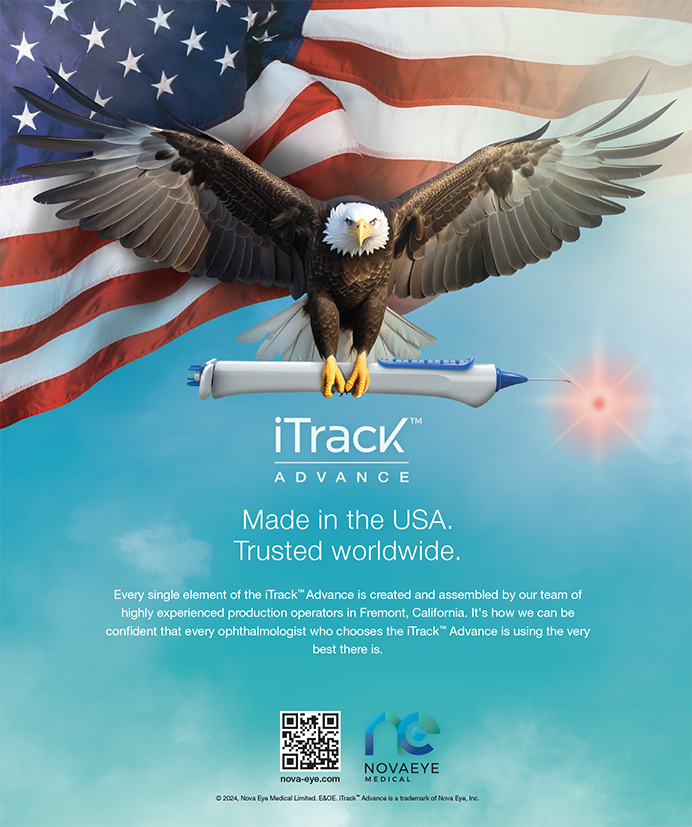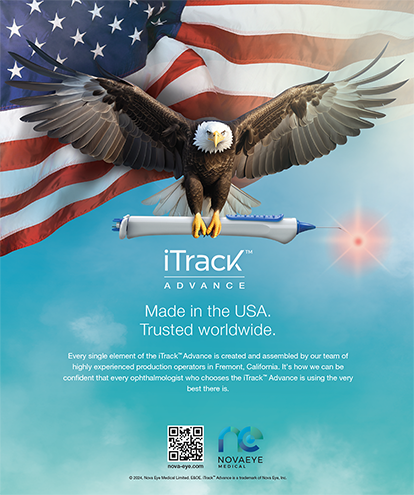Intraoperative capsular block syndrome (CBS) during routine phacoemulsification is an uncommon but serious complication that results in posterior capsular rupture and possibly posterior dislocation of the crystalline lens. This problem has been well described with posterior polar cataracts by Osher et al.1 Hurvitz, in a letter to the editor, outlined the contributory role of hydrodissection during routine manual phacoemulsification.2 Predisposing factors include posterior polar and mature cataracts and a long visual axis.3 CBS occurs because of a rapid increase in the volume of posterior fluid during hydrodissection in conjunction with impeded fluid egress from the capsular space.
THE FEMTOSECOND LASER AND CBS
My colleagues and I reported two cases of CBS associated with laser cataract surgery.4 The two eyes were part of the first 200 eyes that underwent laser cataract surgery at the Vision Eye Institute in Australia (Figures 1 and 2). Both instances occurred in two older patients with grade IV nuclear sclerotic cataracts. The patients' age and mature cataracts are recognized risk factors for CBS. In both cases, the laser portion of the procedure was uncomplicated, and the capsulotomies were completed. During hydrodissection, however, wrinkling and movement of the lens capsule and iris were noted, and the lens shifted posteriorly. Vitreoretinal surgery was required for retrieval and placement of a sulcus-fixated IOL.
Yeoh described the “pupil snap sign” with routine phacoemulsification and CBS.5 An increased incidence of CBS was noted following the creation of the capsulorhexis when a continuous curvilinear capsulorhexis replaced can opener-style capsulotomies.6 Similarly, the uniform capsulotomy created with a femtosecond laser may increase the potential for blocked fluid egress by the elevated nucleus after hydrodissection. The presence of intracapsular gas and possibly laser-induced changes in the cortex are unique to laser cataract surgery and may represent additional risk factors for intraoperative CBS in high-risk patients. The underlying mechanism appears to be resistance to the flow of injected fluid around the lens nucleus, adding to capsular distension and/or increasing resistance around the edge of the laser-cut capsulotomy.
SURGICAL RECOMMENDATIONS
My colleagues and I recommend performing some or all of the following intraoperative maneuvers during laser cataract surgery:
- Reduce the amount of ophthalmic viscosurgical device before removing the anterior capsule to avoid overinflating the anterior chamber.
- Decompress the anterior chamber before and during hydrodissection by exerting pressure on the posterior lip of the corneal incision with the elbow of the cannula.
- Decompress the lens capsule during hydrodissection by elevating the anterior capsule with the tip of the hydrodissection cannula during injection.
- Inject the hydrodissection fluid slowly and titrate the volume based on the visibly expanding fluid wave.
- Use a prechopper or blunt-tipped sideport instrument to split the hemisphere before hydrodissection to allow the gas and/or injected fluid to come forward.
Of course, some surgeons now use little or no hydrodissection with laser cataract surgery.
GAS PATTERNS
Different gas patterns are visible with laser cataract surgery (Figure 3). Sometimes, the gas escapes anteriorly as bubbles into the anterior chamber. Other times, in eyes with dense nuclei, the gas that is trapped takes on a mushroom-shaped appearance behind the nucleus. In the latter scenario, the surgeon must be cognizant of the possibility of inducing CBS.
CONCLUSION
CBS is not unique to any particular femtosecond laser. Surgeons must be aware of this complication with all systems. In a subsequent study of 1,300 eyes treated with laser cataract surgery at our center,7 no incidents of CBS occurred while we followed the recommendations provided herein. To my mind, ophthalmologists' awareness of the changed intraocular environment after fragmentation of the lens and capsulotomy and their modification of surgical technique can make CBS a completely avoidable problem.
Michael A. Lawless, MBBS, FRANZCO, FRACS, is medical director of the Vision Eye Institute in Chatswood, New South Wales, Australia. Dr. Lawless may be reached at +61 2 9424 9999; michael.lawless@visioneyeinstitute.com.au.
- Osher RH, Yu BC, Koch DD. Posterior polar cataracts: a predisposition to intraoperative posterior capsular rupture. J Cataract Refract Surg. 1990;16:156-162.
- Hurvitz LM. Posterior capsular rupture at hydrodissection (letter). J CataractRefract Surg. 1991;17:866.
- Miyake K, Ota I, Ichihashi S, et al. New classification of capsular block syndrome. J Cataract Refract Surg. 1998;24:1230-1234.
- Roberts RV, Sutton G, Lawless MA, et al. Capsular block syndrome associated with femtosecond laser assisted cataract surgery. J Cataract Refract Surg. 2011;37:2068-2070.
- Yeoh R. The ‘pupil snap' sign of posterior capsule rupture with hydrodissection in phacoemulsification [letter]. Br J Ophthalmol. 1996;80:486.
- Nishi O, Nishi K, Takahashi E. Capsular bag distension syndrome noted 5 years after intraocular lens implantation. Am J Ophthalmol. 125(4):545-547.
- Roberts T, Lawless M, Chan C, et al. Femtosecond laser cataract surgery: technology and clinical practice [published online ahead of print July 12, 2012]. Clin Experiment Ophthalmol. doi:0.1111/j.1442-9071.2012.02851.x.


